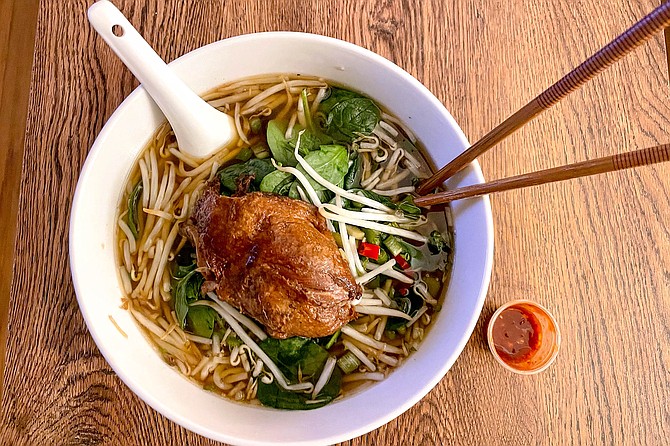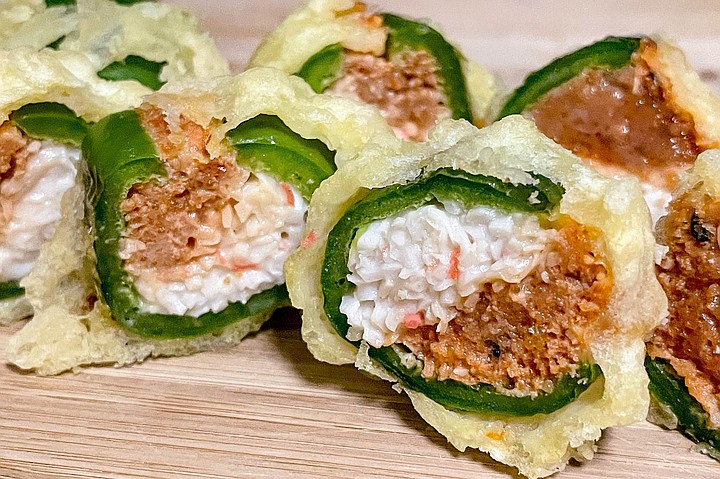 Facebook
Facebook
 X
X
 Instagram
Instagram
 TikTok
TikTok
 Youtube
Youtube

Someone finally did something about the excess fees charged by third party delivery apps such as Doordash, UberEats, and GrubHub. And that someone was the new mayor.
Recently inaugurated mayor Todd Gloria issued an executive order last Monday, which temporarily caps the percentage delivery apps may charge restaurants at 18 percent per order. Specifically, the order breaks down a 15 percent cap “for delivery,” and an additional 3 percent for “all other fees.”
Considering such apps typically charge upwards of 30 percent per order, we can plainly see this move will preserve a significant portion of restaurants’ already nominal profit margins. In that regard, I have to applaud the mayor’s efforts, which were encouraged by members of the city council. I wouldn’t mind seeing the cap set even lower, but really my chief complaint would be that the order isn’t permanent.
However, four days after the order was issued, it’s become pretty clear that the fee cap will have little or no impact on the final costs paid by the customer.

I’ve been sorting through past orders I’ve made on several of these apps over the past few months, and re-creating them in today’s terms. In general, I see no change. In no case has the price gone down following Gloria’s action. In several cases, the prices have gone up in the new year, thanks to the application of “driver benefits,” a surcharge apps now add to demonstrate how much they care about the safety and income of their independent contract drivers.
In a GrubHub order from the Asian Bistro, drunken noodles and roasted duck noodle soup cost the same — $29 for the food, and $40 after fees, tax, and tip. An early December order I placed from Ramen Ryoma, for a mix of sushi and ramen, still cost $47 for the food plus $16 for the rest. And a look back at DoorDash and Postmates show that HiroNori ramen continues to cost several dollars more per bowl when you order for delivery, than it does when you order directly from the restaurant. And that’s before tax, tip, and fees are applied.
I suppose the good news is that consumer side delivery fees don’t seem to have gone up yet. Although that might be the logical conclusion, if the apps look for a way to replace profit lost to the new cap. It may ultimately depend on where the pain point is for consumers weighing the convenience of home delivery against its extravagant cost.
Still, presuming the move helps keep more restaurants in business while frequent diners ride out the pandemic at home, it’s a positive step toward assuaging the guilt we might feel, paying so much more, only for the restaurant to earn so much less.


Someone finally did something about the excess fees charged by third party delivery apps such as Doordash, UberEats, and GrubHub. And that someone was the new mayor.
Recently inaugurated mayor Todd Gloria issued an executive order last Monday, which temporarily caps the percentage delivery apps may charge restaurants at 18 percent per order. Specifically, the order breaks down a 15 percent cap “for delivery,” and an additional 3 percent for “all other fees.”
Considering such apps typically charge upwards of 30 percent per order, we can plainly see this move will preserve a significant portion of restaurants’ already nominal profit margins. In that regard, I have to applaud the mayor’s efforts, which were encouraged by members of the city council. I wouldn’t mind seeing the cap set even lower, but really my chief complaint would be that the order isn’t permanent.
However, four days after the order was issued, it’s become pretty clear that the fee cap will have little or no impact on the final costs paid by the customer.

I’ve been sorting through past orders I’ve made on several of these apps over the past few months, and re-creating them in today’s terms. In general, I see no change. In no case has the price gone down following Gloria’s action. In several cases, the prices have gone up in the new year, thanks to the application of “driver benefits,” a surcharge apps now add to demonstrate how much they care about the safety and income of their independent contract drivers.
In a GrubHub order from the Asian Bistro, drunken noodles and roasted duck noodle soup cost the same — $29 for the food, and $40 after fees, tax, and tip. An early December order I placed from Ramen Ryoma, for a mix of sushi and ramen, still cost $47 for the food plus $16 for the rest. And a look back at DoorDash and Postmates show that HiroNori ramen continues to cost several dollars more per bowl when you order for delivery, than it does when you order directly from the restaurant. And that’s before tax, tip, and fees are applied.
I suppose the good news is that consumer side delivery fees don’t seem to have gone up yet. Although that might be the logical conclusion, if the apps look for a way to replace profit lost to the new cap. It may ultimately depend on where the pain point is for consumers weighing the convenience of home delivery against its extravagant cost.
Still, presuming the move helps keep more restaurants in business while frequent diners ride out the pandemic at home, it’s a positive step toward assuaging the guilt we might feel, paying so much more, only for the restaurant to earn so much less.
Comments